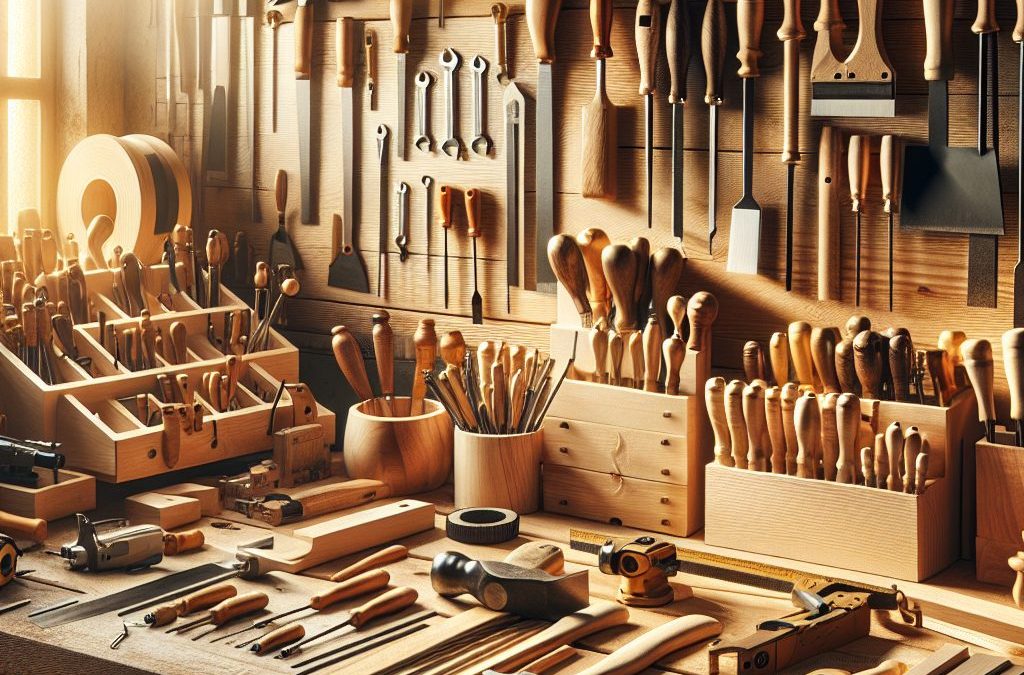Organizing woodworking tools is crucial for enhancing productivity and ensuring safety in the workshop. A well-organized workspace not only improves efficiency but also allows woodworkers to locate tools quickly, minimizing frustration during projects. With a systematic approach, you can create a functional and aesthetically pleasing environment that fosters creativity and craftsmanship.
Assessing Your Tool Collection
The first step in organizing your woodworking tools is to take stock of what you have. This involves gathering all tools from various locations and categorizing them based on their function. For instance, group together hand tools, power tools, and measuring instruments. This initial assessment allows you to identify duplicates or items that may no longer serve a purpose, leading to a more streamlined collection.
After categorizing your tools, it’s essential to clean and maintain them. Dust and debris can accumulate over time, affecting the performance of your tools. By investing time in cleaning, you ensure that each tool is in optimal condition, ready for use when needed. Additionally, consider applying protective coatings to metal parts to prevent rust and wear, which can prolong the life of your tools.
Once your tools are clean and sorted, you can begin to think about storage solutions. This is where creativity comes into play. Depending on the size of your workshop, you may opt for wall-mounted racks, tool chests, or pegboards. Each storage option offers unique benefits and can be tailored to fit your specific needs. For further insights on effective workspace organization, explore workshop setup & organization.
Creating an Efficient Layout
The layout of your workshop plays a significant role in the organization of your tools. An efficient layout allows for a smooth workflow, reducing the time spent moving between different workstations. Consider the tasks you perform most frequently and arrange your tools accordingly. For example, keep frequently used hand tools within arm’s reach, while power tools can be stored in designated areas that are easily accessible but not in the way of daily activities.
In addition to tool placement, think about incorporating designated work zones. For instance, create a cutting area, an assembly zone, and a finishing space. By establishing these zones, you can prevent clutter and ensure that each area serves its specific purpose, which ultimately enhances productivity. Furthermore, maintaining clear pathways between these zones is essential for safety, allowing you to move freely without the risk of tripping over tools or materials.
Finally, consider labeling storage areas and tool locations. Labels provide a visual cue that can help you and others locate tools quickly, promoting a culture of organization in your workshop. This practice not only saves time but also encourages consistency in tool maintenance and storage, ensuring that every tool finds its way back to its rightful place after use.
Organizing woodworking tools effectively is crucial for enhancing productivity and ensuring safety in the workshop. A well-structured workspace allows woodworkers to access their tools easily, minimizing time spent searching for the right equipment. This section will explore essential strategies to help you achieve an organized and efficient woodworking environment.
Utilizing Storage Solutions
One of the most effective ways to organize woodworking tools is through the use of dedicated storage solutions. Consider investing in tool chests, pegboards, or shelving units that can accommodate various tools. These storage options not only help keep tools visible but also protect them from damage. For instance, a pegboard can be customized to hold frequently used tools, making them readily accessible during projects.
Additionally, clear storage bins can be beneficial for smaller items such as screws, nails, and bits. By categorizing these items and labeling the bins, you can quickly find what you need without rummaging through clutter. An organized storage system will ultimately save time and reduce frustration, allowing you to focus more on your woodworking projects.
Implementing a Maintenance Routine
Regular maintenance of your tools is another essential aspect of organization. Keeping tools clean and in good working condition not only prolongs their lifespan but also enhances safety. Establishing a routine for cleaning and inspecting your tools after each use can prevent rust and wear. Furthermore, ensuring that tools are returned to their designated storage spots after use will help maintain order in your workshop.
Incorporating a checklist for tool maintenance can also be useful. This checklist can include tasks such as sharpening blades, lubricating moving parts, and checking for any signs of damage. By staying proactive about tool upkeep, you can avoid last-minute repairs and ensure that your tools are always ready for the next project. Properly maintained tools are not only efficient but also contribute to the overall safety of your working environment.
Creating a Workflow System
Establishing a clear workflow system can further enhance organization in your woodworking space. By designating specific areas for different tasks—such as cutting, sanding, and assembly—you can streamline your process and reduce the likelihood of clutter. This separation helps ensure that tools and materials are used in the appropriate zones, which can minimize accidents and improve efficiency.
Moreover, consider arranging your tools in a manner that aligns with your workflow. For example, keeping cutting tools near the cutting station and assembly tools close to the assembly area can save time and effort. A well-planned layout can significantly enhance your overall productivity, allowing you to work more effectively.
For beginners looking to build their tool collection, understanding the essential woodworking tools is crucial. By focusing on these key items and organizing them properly, you can create a functional and enjoyable woodworking experience. An organized workshop not only fosters creativity but also promotes a safer working environment, allowing you to fully enjoy the art of woodworking.

